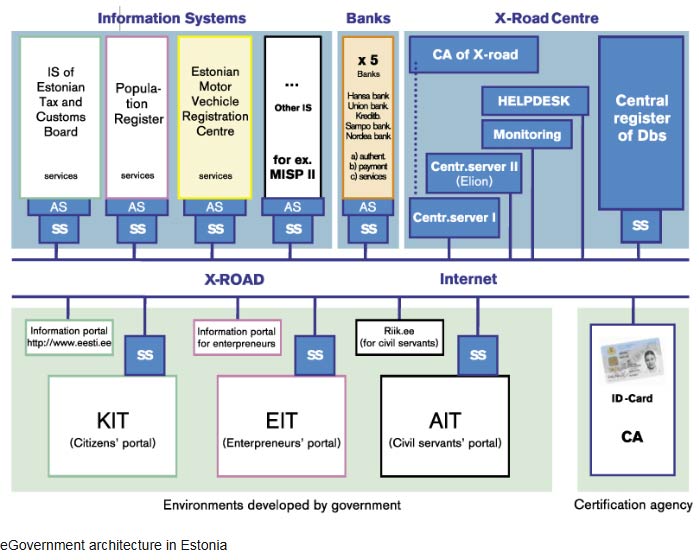Features
Innovating systems: Need to build over reinventing the wheel


Case for Inventing New Systems
Inventing new systems allows us to break free from the constraints of outdated frameworks and design solutions that are fit for purpose in a changing world. In the case of phone tracing, a modern system could leverage cutting-edge technologies such as blockchain for secure data handling or AI for real-time tracking. Such innovations would not only enhance efficiency but also address vulnerabilities like hacking, which rendered the old system ineffective.
By building anew, institutions can focus on creating systems that are: Resilient: Designed to withstand emerging threats and challenges. User-Centric: Prioritising the needs and convenience of citizens. Transparent: Ensuring accountability and public trust.
Why Reinventing the Wheel Persists
Despite its limitations, reinventing the wheel persists because it appears easier and less costly in the short term. Decision-makers often fear the risks and disruptions associated with building new systems. However, this mindset ignores the long-term costs of inefficiency and the missed opportunities for innovation.
The Path Forward
To break free from the cycle of reinvention, we must adopt a mindset of innovation: Invest in Research and Development: Allocate resources to design and implement systems that meet modern needs. Foster Collaboration: Engage stakeholders, including citizens, experts, and policymakers, to create inclusive and effective solutions. Embrace Change: Recognise that bold decisions to build anew are often necessary for meaningful progress.
Overseas experiences
In the United States, the Internal Revenue Service (IRS) has long faced criticism for relying on antiquated tax processing systems. Despite numerous updates and patches, these systems struggle to handle the complexity of modern tax codes and the volume of filings. Efforts to revamp the IRS’s technology have been incremental rather than transformative, resulting in persistent inefficiencies and public frustration.
Similarly, in India, the implementation of the Goods and Services Tax (GST) initially relied on legacy systems that were ill-equipped to handle the scale and diversity of transactions. While adjustments were made, these efforts highlighted the limitations of reinventing outdated systems rather than designing new, robust frameworks from scratch.
Examples of Successful Innovation
Estonia’s e-Government System is a global leader in digital governance. Instead of attempting to modernise traditional bureaucratic structures, Estonia built an entirely new e-governance system. Citizens can access services like voting, tax filing, and healthcare online through a secure digital platform. This system’s design prioritises transparency, efficiency, and user experience, saving citizens time and fostering trust in government.
Singapore’s Urban Mobility System developed a world-class public transport system using data-driven planning and cutting-edge technology. Instead of retrofitting existing systems, Singapore invented a new approach to urban mobility, integrating autonomous vehicles, cashless payments, and predictive maintenance. This innovation not only improved efficiency but also positioned Singapore as a global leader in smart transportation.
Rwanda’s Drone-Based Healthcare Delivery the government partnered with private companies to deploy drones for delivering medical supplies to remote areas. This innovative system bypassed outdated infrastructure, directly addressing the country’s unique challenges and improving healthcare access.
Learning from Failures to Embrace Innovation
Conversely, when systems are merely reinvented rather than reimagined, they often perpetuate inefficiencies. The European Union’s Common Agricultural Policy (CAP) has faced criticism for repeated reforms that fail to address fundamental issues like sustainability and fairness. By focusing on patchwork solutions, the CAP has struggled to meet the evolving needs of farmers and the environment, demonstrating the risks of clinging to outdated frameworks.
Global Implications of Inefficiency
The consequences of reinventing rather than inventing extend beyond inconvenience and inefficiency. Outdated systems can undermine trust in institutions, stifle innovation, and hinder economic growth. For instance, legacy financial systems in developing countries often exclude large segments of the population from accessing banking services, perpetuating poverty and inequality. By contrast, mobile-based financial innovations like Kenya’s M-Pesa have revolutionized access to banking, empowering millions.
The Need for a Paradigm Shift
Globally, governments and institutions must recognise that sticking to old systems often comes at a higher cost than inventing new ones. However, the reluctance to innovate stems from several factors: Fear of Disruption: Decision-makers often view new systems as risky and disruptive, opting for the perceived safety of incremental changes. Resource Constraints: Developing new systems requires significant investment in time, money, and expertise. Resistance to Change: Institutional inertia and fear of the unknown can stifle creativity and innovation.
Overcoming these barriers requires a shift in mindset, emphasising the long-term benefits of bold, transformative action over the short-term comfort of familiarity.
The Role of Communication and Collaboration
Innovation also demands effective communication and collaboration among stakeholders. The Sri Lankan phone-tracing case highlights the importance of ensuring that all parties—regulatory bodies, service providers, and the public—are informed and aligned. Estonia’s e-government success, for instance, was driven by a coordinated effort involving government, private sector, and citizens. Clear communication about new systems, their benefits, and their usage is crucial to building trust and ensuring adoption.
Barriers to Innovation and Strategies for Overcoming Them
Despite its advantages, inventing new systems faces several obstacles: Institutional Inertia: Established organisations often resist change due to entrenched interests and fear of disruption. Resource Constraints: Designing new systems requires significant investment in expertise, time, and funding, which many institutions are reluctant to allocate. Cultural Resistance: Societal norms and perceptions can hinder the adoption of innovative systems, as seen in the public’s skepticism toward digital governance initiatives in some countries.
Overcoming these barriers requires a combination of leadership, collaboration, and education. Research by many scholars emphasise the importance of visionary leadership in driving systemic innovation. Effective communication and stakeholder engagement are also crucial to building trust and ensuring the adoption of new systems.
The Way Forward: Embracing Innovation
To foster innovation, governments and institutions must prioritise long-term goals over short-term fixes. Policymakers should invest in research and development, adopt agile methodologies, and encourage cross-sector collaboration to design systems that are adaptable and future-proof. As seen in Estonia, Singapore, and Rwanda, the benefits of such investments far outweigh the initial costs.
Moreover, international cooperation can accelerate innovation by sharing best practices and pooling resources. Organizations like the United Nations and the World Bank have a critical role to play in promoting systemic innovation, particularly in developing countries where resource constraints are more pronounced.
Reinventing the wheel may feel familiar, but it is not sustainable in an era of rapid change. The challenges of today require us to invent systems that are resilient, efficient, and responsive. As the incident with the lost phone demonstrates, clinging to outdated frameworks not only wastes resources but also erodes public trust.
By embracing innovation, we can create systems that not only solve current problems but also anticipate and adapt to future challenges. It is time to stop patching the cracks and start building the foundations for a better tomorrow.
The challenges of today cannot be solved by reinventing the wheel. From inefficient phone-tracing mechanisms in Sri Lanka to outdated tax systems in the United States, the costs of clinging to old frameworks are evident. By embracing innovation and inventing new systems, governments and institutions can create solutions that are resilient, efficient, and responsive to modern needs.
Global examples like Estonia’s e-government and Rwanda’s drone-based healthcare delivery demonstrate the transformative potential of new systems. It is time to shift from patching cracks to building robust foundations, ensuring that the systems of tomorrow meet the demands of an ever-changing world. Only by prioritizing innovation over reinvention can we truly unlock progress and improve the lives of citizens worldwide.